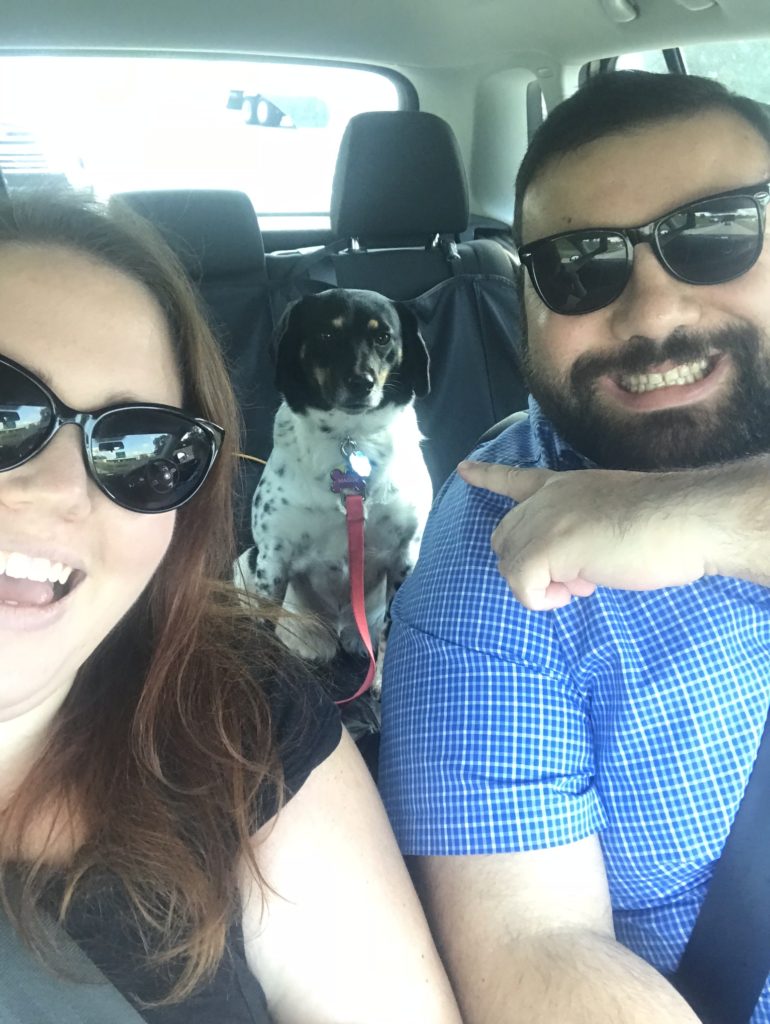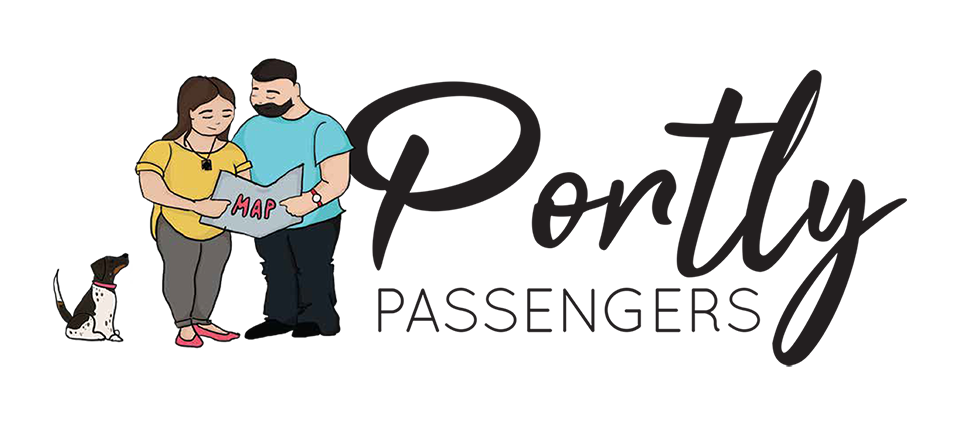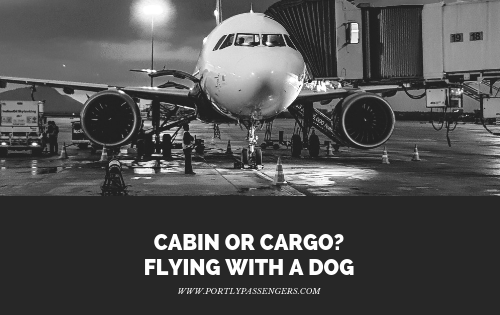Overcoming Motion Sickness in Dogs
We may earn money or products from the companies mentioned in this post.
If you are anything like us, you love traveling with your dog. But sometimes the trip doesn’t go as planned and you spend a good portion of your trip cleaning up vomit from the back seat. This isn’t pleasant for either you or your dog. Nausea and vomiting can cause fear and anxiety in our dogs, but understanding that there are many different ways of helping your dog overcome motion sickness can bring some relief to you.
The first step is to have your vet assess your dog. Unfortunately, some health issues may coincide or be masked by the idea of motion sickness. Once you get a clean bill of health you might still have the issue of your dog getting motion sick while in a car. So the question comes down to
“How do I help my dog overcoming motion sickness?”
Before Your Trip
Assess your
Each dog shows different signs, our dog Maggie would shake and refuse to go near the car after I adopted her. When I realized this was an issue, I would place her in the car without moving every time we went out for a walk. By getting her used to sitting in the car she learned that she would not be hurt or harmed in this process of traveling.
From there we built up to driving around town where we continued to observe her behavior and paid attention to triggers that would set off her anxiety. For her, windows were the biggest anxiety and fear trigger that we had to overcome. But with time and a lot of patience, her fears subsided and she now loves when I pull up to a drive-thru window and they have cookies for her.
It’s important to know that this step can take a few days or weeks to overcome when dealing with a fearful dog. By observing triggers in your dog, you will build up a training program for your dog that works best for them and you. Once you have pinpointed the triggers that might show or set off the signs of anxiety begin to reassure your pup that they will not be harmed.
Work slowly with your dog to reassure them that everything will be ok. To do this take each action one step at a time. For example, if your dog shows signs of fear getting into the car start by walking them up and around the car, reassuring them the whole time. Don’t open doors, don’t try to put them in the car, just let them know that standing, sitting, and walking around the car equals positive reinforcement. Once you have done that start opening doors, again with positive reinforcement, each time they do something correctly. From there move into the car, but try to remember to end on a positive note with each lesson.
By ending on a positive note, you will continue to reinforce the desired behavior and lessen the dog’s fear.
Once you have assessed their behavior getting into the car you can now start the process of assessing when or how they become sick during travel.
Motion Sickness During Your Trip
If your dog shows no signs of fear or anxiety getting into the car, that’s great! But you might be wondering why your dog is still getting sick on car rides.
Again, having a veterinarian check your dog for any health issues is a great place to start.
If your dog is still getting motion sick throughout your travels, now is a time to start monitoring when during the trip they are getting sick. Make some notes about how far away from home you are when they get sick. Notice if you are driving at a certain time, speed, road, etc. Patterns can help you determine if it’s something that you need to change.
Once you notice the pattern now is the time to start looking for a solution. For example, if you can go five miles down the road before your dog gets sick plan out some routes that are 4.5 miles away that allow you to stop and take the dog out of the car for a while. For instance, maybe a local park or trail in which you can take your pup on a walk before heading home.
By interrupting the pattern that occurs, you will help minimize the chances of your dog getting sick. Overtime starts to expand the trips by a mile or two but continues to think about disrupting the pattern that causes them to be sick.
What if it’s not behavioral?
The above-mentioned training tools not only help your dog by removing any negative feelings, such as being sick in the car, while allowing you the owner to figure out how best to help your pup. Unfortunately with pets, they can’t just tell us directly what is causing them to get sick, so we have to eliminate and investigate to find what it is.
For some dogs, it might be anxiety or their health or just a bad experience. When nothing else has worked there are a few medications you can get that might help. Talking to your veterinarian will help you if you are not sure about any of the over-the-counter options.
Medications
Many dog owners use medication like Benadryl to help calm their dogs during travel. If you choose this option there are a few things you need to know before proceeding.
- Some dogs do not react well to being drowsy. This option might cause a dog to become aggressive or sick.
- Make sure that the medication only contains diphenhydramine.
- 25mg pills are your average strength in a pill. The dosage of Benadryl for dogs is 1mg per pound.
- Always inform or talk to your doctor before giving medication.
- If you are flying, many airlines ask that you don’t give any form of drowsy inducing medication before a flight.
Dramamine is another option for your pet. This medication is also used on humans for the exact same intent of warding off motion sickness.
Just like the
- Some dogs do not react well to being drowsy. This option might cause a dog to become aggressive or sick.
- Dimenhydrinate is the medical term.
- Medium to large dogs should receive around 25-50mg.
- Should be given about an hour before departure.
- Talk to your vet before administering.
Herbal Remedies
Some owners also use treats with calming herbal remedies such as Chamomile or Hemp. I have only personally used products like these on horses, but do not want to exclude them from options for you to talk to your vet with.
Another option you might consider is a calming collar. The collar gives off pheromones that encourage calm behaviors.
If your dog is continually getting sick another option that many owners look into is the use of ginger. Ginger is a root that is used in cooking and beverages that we drink and eat on a daily basis. It’s found to help with calming stomachs and nausea due to many ailments. Ginger should be given in small quantities to dogs.
Alternative Options
If you do not want your dog to be drowsy, consider changing their eating habits before traveling. I have personally done this to help with motion sickness for my dogs and have found it helps especially if there is a health-related issue.
I would remove food minimally 2 hours before departure and water about 30 minutes before departure. Ensuring that your dog has an empty stomach gives less for them to vomit up in the car.
Once in the car ensure that your dog is safely secured. There are many options for harnesses and car seats that can help provide security for your dog while traveling.
Dog Car Seats are popular for smaller dogs. While Dog Crates are popular for larger dogs.
If your dog does not tolerate being in a crate or car seat consider purchasing seat covers.
Protecting your Car Seats

We utilize seat covers in my car while traveling because Maggie sheds a lot. When Peter and I are traveling together Maggie sits in the back seat, but when it is just myself and Maggie she loves to sit in the front seat.
After I purchased my new car, I found Kurgo to be the best option for my car as they offered both the bucket front seat cover and the bench back seat cover.
These seat covers have come in handy with some of our other pets when traveling as well as they are waterproof. So I have chosen to keep them on my seats all year round. The best part is they are washable!
*Some links on this post might be affiliate links. There is no additional cost to you but they do provide us with a small commission when you purchase.







One Comment
Pingback: